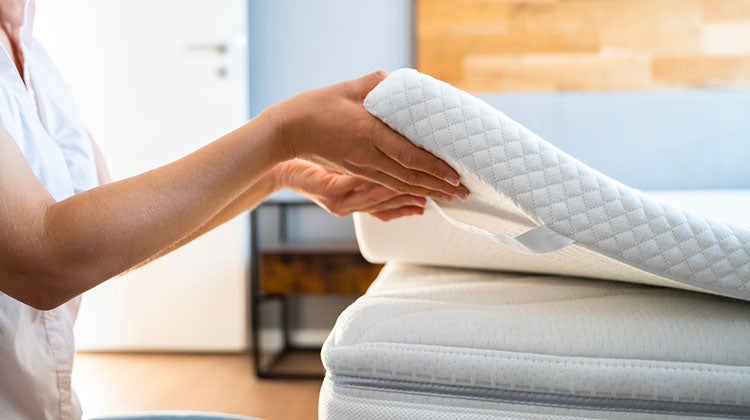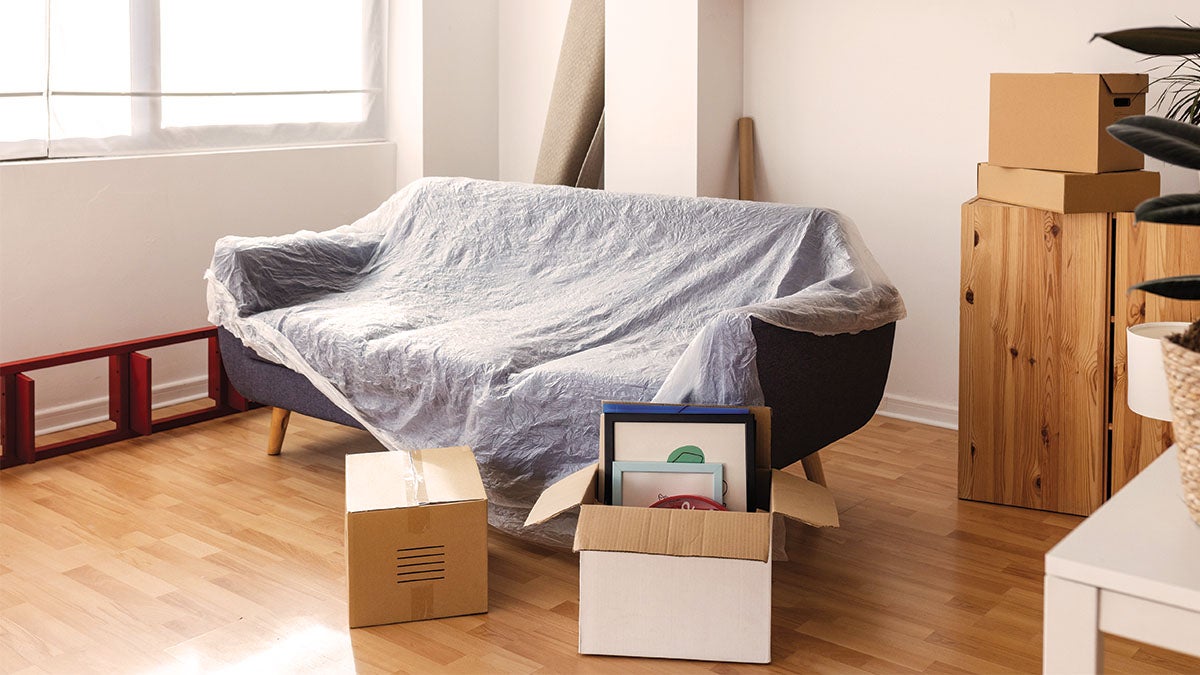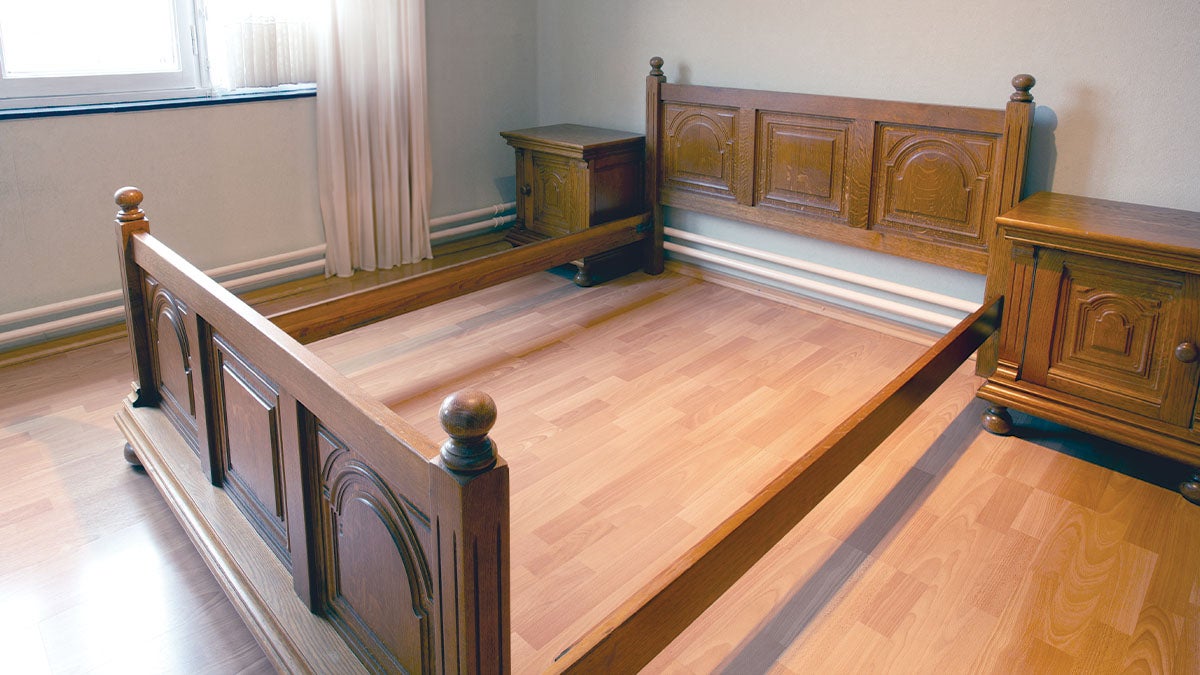We all know that recycling is important, but the details of why and how it's important can be unclear. For this reason, our team of Jun Removal experts created this guide to help you through everything you need to know about upcycling and repurposing textiles including fabrics and foams.
After this read, not only will you be a textile recycling expert, but you will also have fun facts to share with friends and family about the process of recycling each item, its impact on the environment, and the typical uses for the recycled materials.
Textiles: fabric & fiber recycling
When brought to recycling facilities, most mattresses and couches go through a form of mechanical recycling process. The first step can be as simple as a trained technician cutting open the mattress and sorting the fabric in a separate pile. Typically, the fabrics are organized by type (cotton, polyester, wool, or blends) in separate piles. Some recycling facilities will also sort the fabric types by color so that when they are being repurposed, they don’t have to be re-dyed as well.
Next is the cleaning process, which varies significantly depending on the recycling facility the mattress was dropped off at. Did you know that we at 1-800-GOT-JUNK? recycle and donate your removed items whenever possible by bringing them to these types of facilities? Usually, the bare minimum of cleaning involves brushing or shaking off the dirt. Several facilities go a step further and wash the fabrics to get rid of dirt, stains, and other impurities. In some cases, fabrics may require additional treatments of solvents, detergents, enzymes, or other chemicals, depending on the fabric and stain type.
Once fabrics are clean and dry, it’s time to shred them to get closer to a raw material. Fabric shredders are large and heavy-duty machines designed to handle the bulk and density of mattress fabrics. Some facilities will then pack the raw material into a hydraulic press to create a bale of fiber which can then be sold. Other facilities will spin the recycled fibers into yarn for sale and repurposing.
Synthetic fabrics (polyester, nylon, rayon, and others) go through the sorting, cleaning, and shredding processes mentioned above, but at the end of the process, they’re recycled into pellets which can be melted down and reused in new items. If you want to learn more about how different materials are recycled, visit our guide on how to read recycling codes.
Textiles recycling’s environmental impact
The textile volume of a mattress or other piece of furniture is much less than foam, but there are still massive amounts of fabric that need to be diverted from the landfill every year. The United States EPA estimated over 17 million tons of municipal solid waste in 2018 came from textiles. The amount of textiles recycled and used for energy recovery in 2018 equated to the greenhouse gas benefits of taking 550,000 cars off the road for an entire year. Learn more about the environmental impact of different materials to help decrease your carbon footprint.
Foam recycling
Foams are generally composed of polyurethane foam, which is a type of plastic that contains a variety of chemical additives and fire retardants. Separating this foam from a mattress, couch, or other piece of furniture usually requires a trained technician to get the materials sorted, but some higher-tech facilities have large mechanical production lines that can separate the fabrics, foams, and metals.
Because foams are created with chemicals, recycling them can be tricky because different foams have different densities, and mixing different densities of foam creates lumpy and inconsistent new products.
There are many different methods to sort the densities of the foams and the method used mostly comes down to how your local recycling facility handles it. Some facilities simply weigh the foams to estimate density while others take more care by using air separation or flotation tanks to naturally organize the density of foams.
Once the density of foams are organized, a batch of similar density will be sent through a machine that either shreds or grinds the foam into smaller, easy-to-manage pieces. These pieces are then reformed by compressing them and adding chemicals to ensure the new foam has the desired softness and compression capabilities.
Now the large recycled foam blocks are ready to transform into a new product! They can be shipped as raw materials to a manufacturer and cut to the necessary size and shape for their next life as a new product.
Foam recycling’s environmental impact
When it comes to mattresses, a California-based study was conducted to determine the environmental impact of mattress recycling. The results of the study show a tremendous benefit to the environment in greenhouse gas displacement, energy demand reduction, blue water demand reduction, and smog reduction.
42% of the environmental benefits of mattress recycling came from the foam recycling process. That means the average foam recycling from one mattress contributed to 19.6 lbs of greenhouse gas emissions reduced, 100 Watt hours of energy demand reduction, 511 gallons of water saved, and 1.6 lbs of smog reduction.
In cases when polyurethane foam is mixed with wood, leather, or fabric (or contaminated with freon - chemicals used in refrigeration), it can be impossible to go through the standard recycling process. On these occasions, the most valuable option for the used foams is to burn it for fuel and produce energy. This isn’t something you should try at home because the chemicals used to create the foam in the first place can create toxic carcinogens when burned and need to be dealt with in safety-oriented production facilities.
What the recycled materials are used for?
What your recycled textiles and foams become depends greatly on your local recycling facility’s equipment, labor force, and what options they have to sell the finished product locally.
Basic recycling facilities may simply shred fabrics and foams separately and sell bales or compressed stacks of it to manufacturers. More sophisticated recycling facilities may apply chemical treatments to achieve a certain consistency in the foam or to ensure the fabric is all the same color so that the materials can be used for higher-quality consumer goods.
You most likely have used lots of recycled materials throughout your life - possibly without realizing it! If you want to start doing it more consciously, we have a simple guide on how to recycle with tips you can start applying today!
Below is a list of many potential outcomes of the fabric and foam recycling process - but what happens in your local city’s recycling facility may be very different than another one just a few cities away.
Recycled fabrics
- Clothing: t-shirts, jackets, pants, swimwear, shoes, gloves
- Furniture coverings: bedding, upholstery, couches
- Camping materials: tents, sleeping bags
- Car interiors: seat covers, door panels, headliners
- Industrial uses: filters, safety gear, soil geotextiles
- Pet products: pet beds, collars, leashes
Recycled foams
- Filling material in furniture
- Cushions
- Pillows
- Pads
- Underlay and insulation
- Carpeting
- Playground floor softener
- Insulation under indoor floors
- Acoustic insulation
- Miscellaneous products:
- Sponges
- Packaging materials
- Helmets
- Flotation devices
- Orthopedic supports
- Children’s toys
Disposing of your fabrics and foams responsibly
Now that you’re an expert on textile and foam recycling, put that knowledge to good use by booking your mattress disposal, couch removal, or furniture pick up with 1-800-GOT-JUNK?. We’ll dispose of your junk responsibly by donating or recycling where possible. The best part is that we do all the heavy lifting! You won’t need to bring your mattress or furniture out of your room, home, or apartment - we’ll do it for you and drive it to the recycling center ourselves.
If you have more questions on mattress recycling, check out our FAQ blog post.






